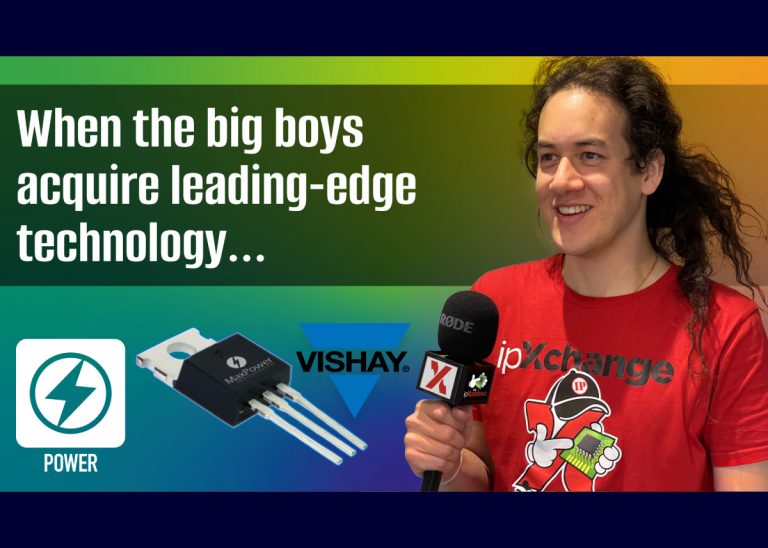ipXchange will rarely talk about industry news, but our team has known Amr for a while and forged a close relationship with him during his MaxPower days, even writing about MaxPower’s Super Barrier Rectifiers while ipXchange was getting off the ground. At the beginning of 2023, industry giants Vishay acquired his promising silicon carbide endeavour, so we caught up with Amr at PCIM to see how everything was going and what developments he could share in Vishay’s expanded SiC portfolio.
With MaxPower under their wing, Vishay gained access to proprietary planar and trench technology, including MaxPower’s third-generation, dual-trench architecture, all enabled through their increased refinement of SiC fabrication processes. This enables Vishay to create SiC devices that are specifically designed for a wide range of applications that include traction invertors and energy storage, using 1200 V devices, as well as on-board chargers and EV charging stations, using 600-800 V devices.
Unlike some devices, Vishay focuses on the trade-off between conduction losses and dynamic parameters for the best overall performance of their silicon carbide, rather than min-maxing certain specifications. With this new technology, Vishay’s second-generation of high-density planar SiC devices are expected to be sampling within the next few months; the third-generation dual-trench technology aims to follow soon after. Discrete, bare die, and complete SiC solutions are on the horizon, so there’s something for everyone who has their eye on making the transition from silicon to this newer, far more efficient technology.

